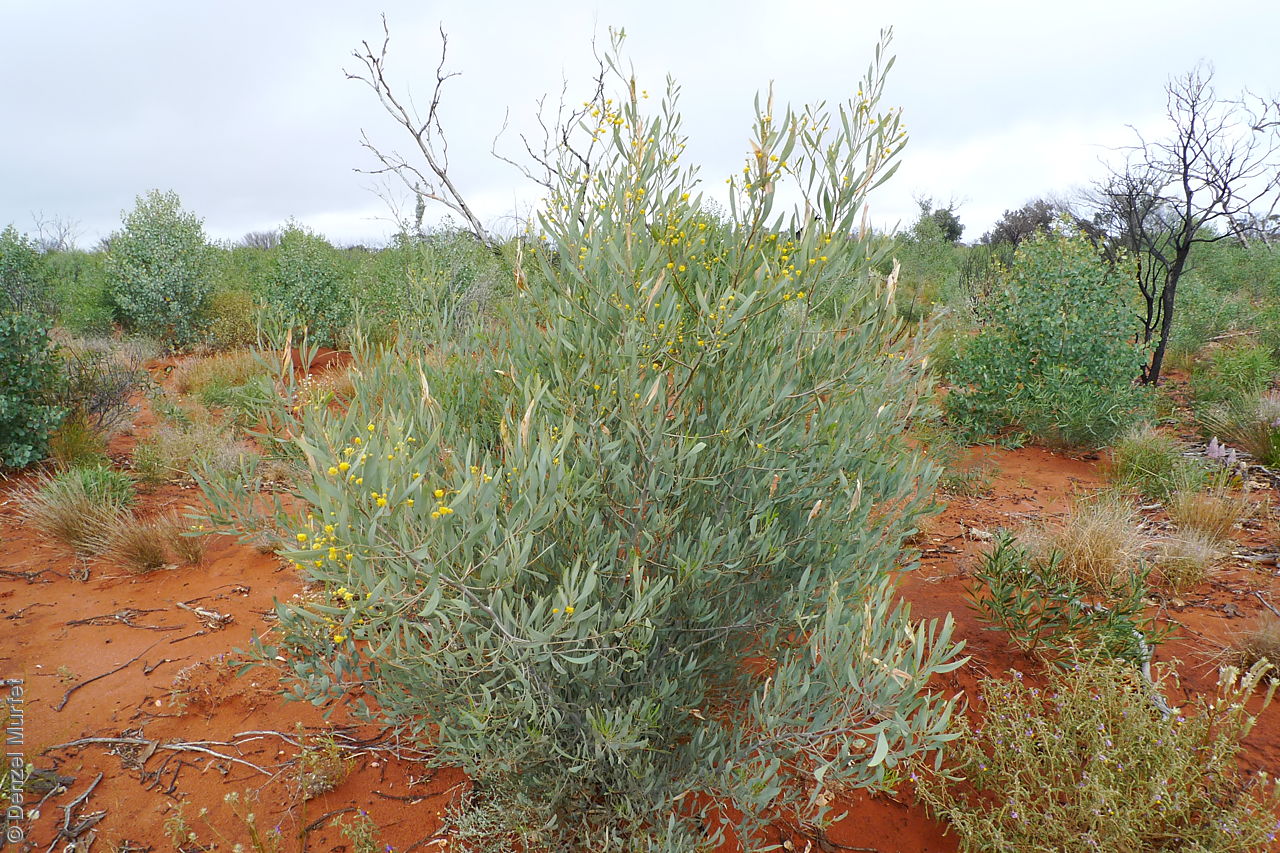
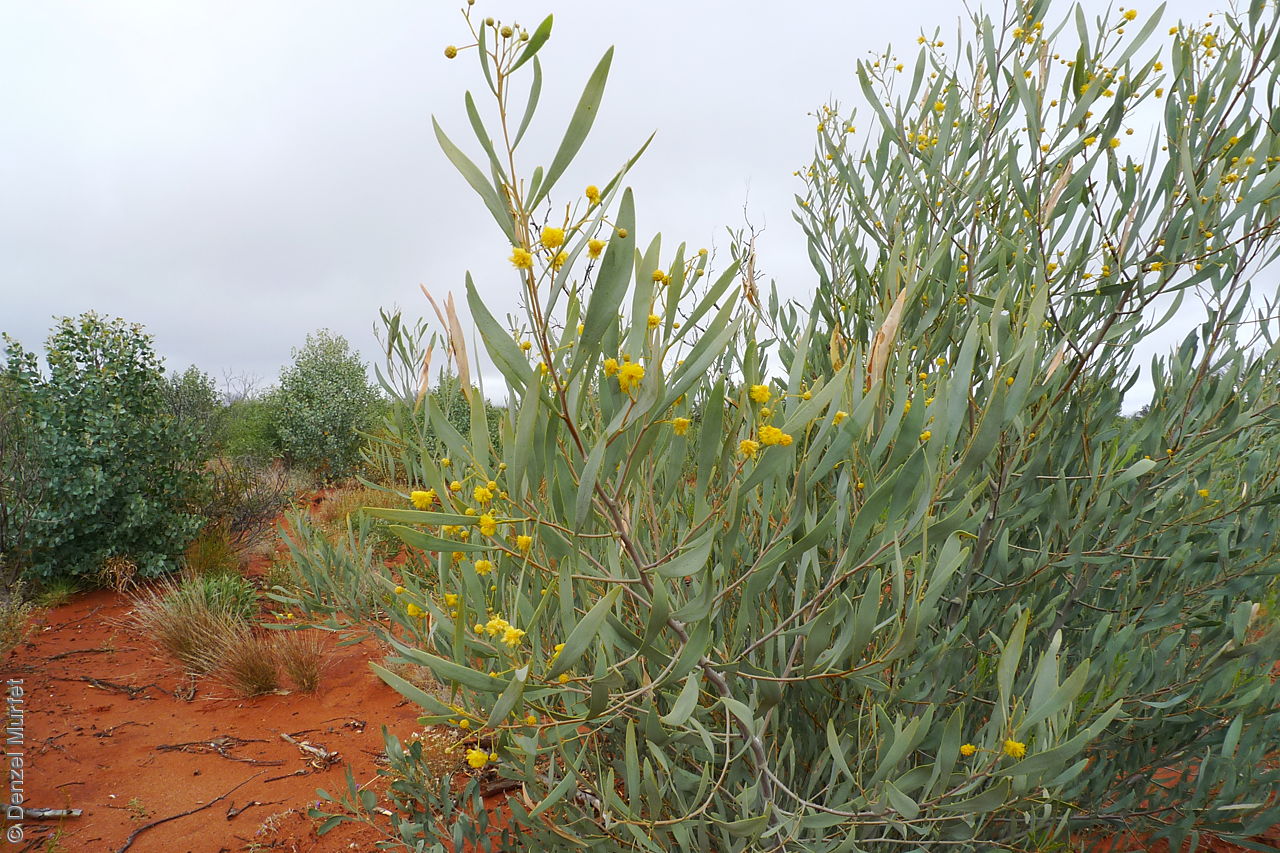
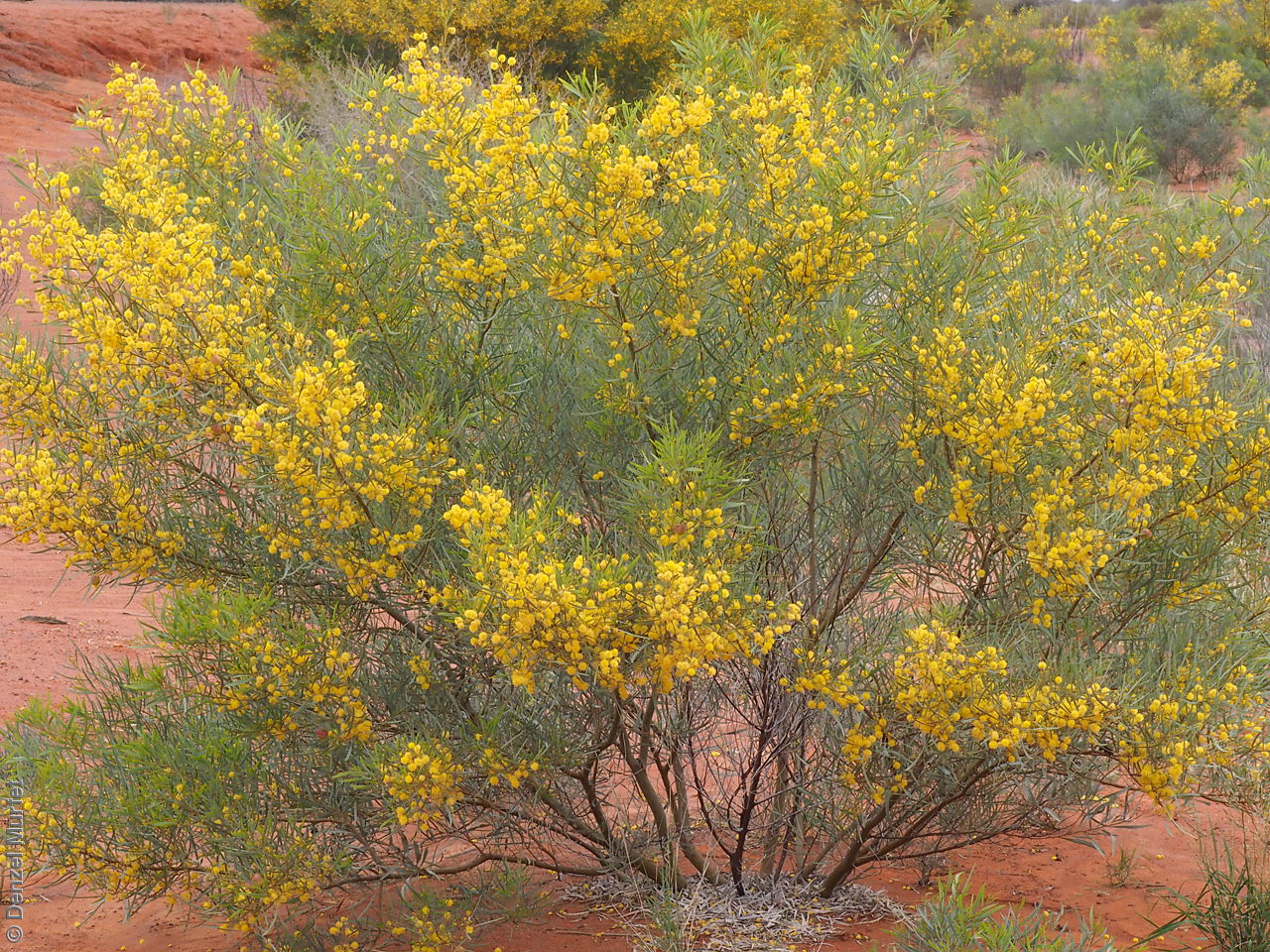
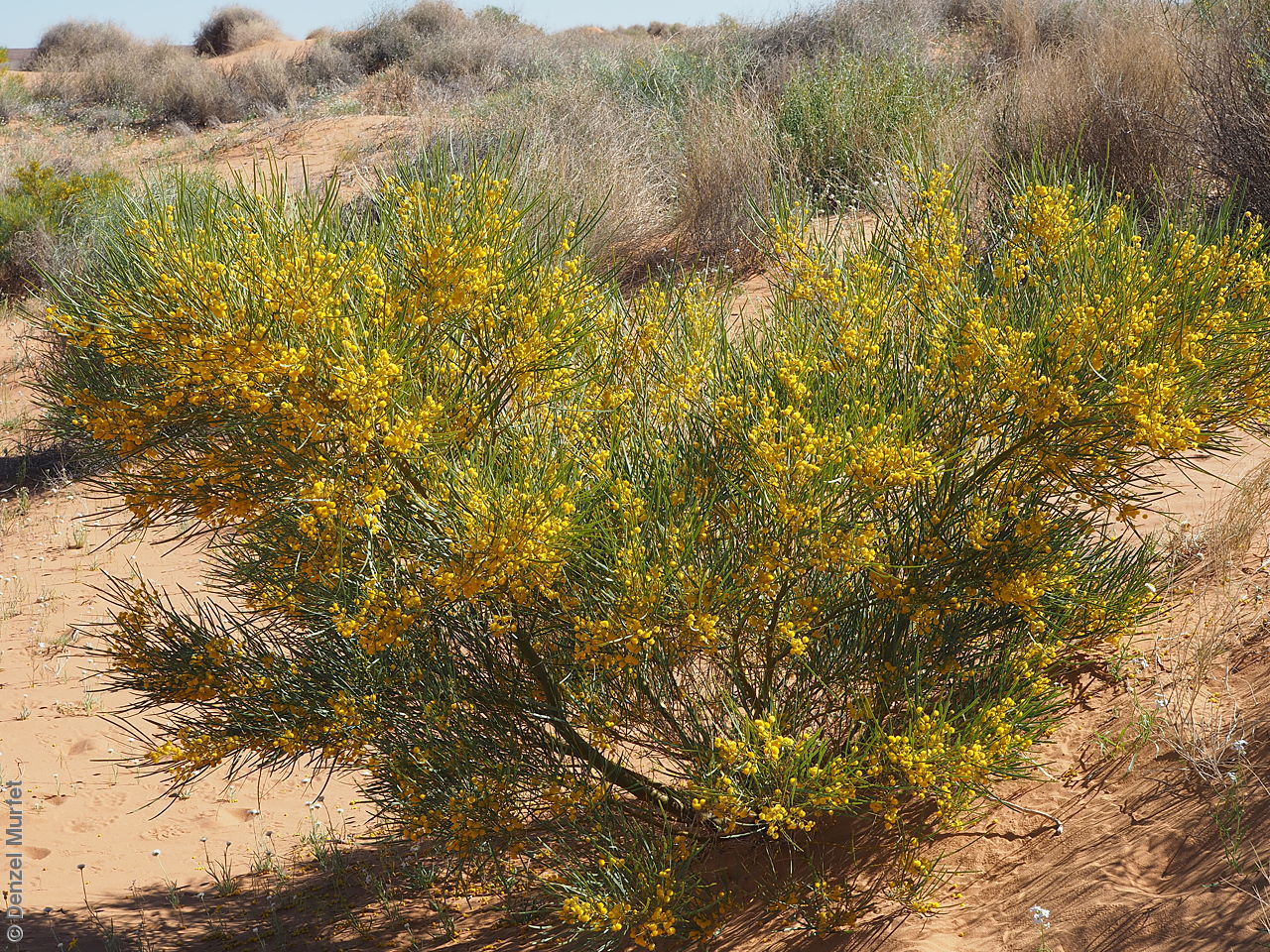
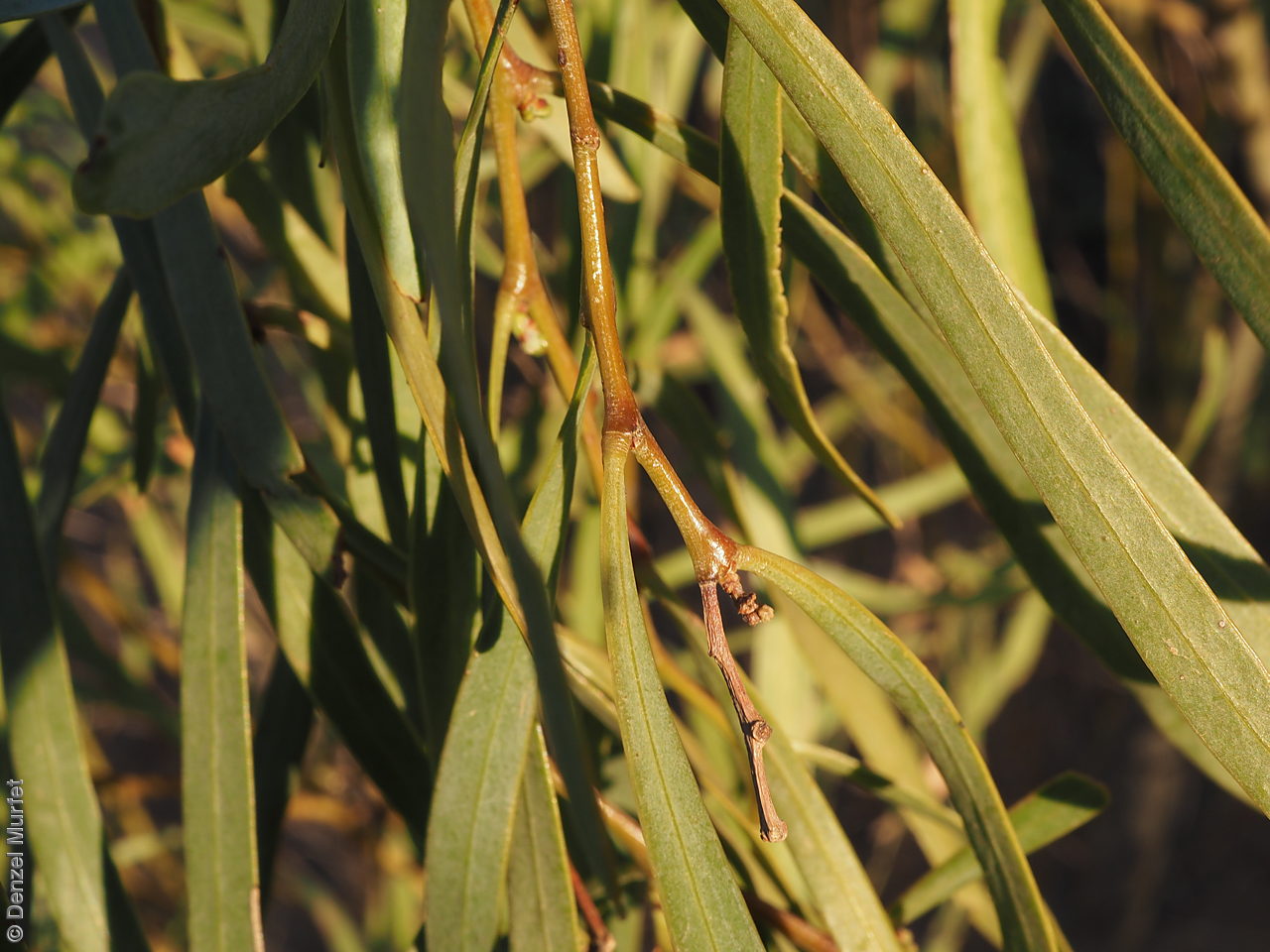
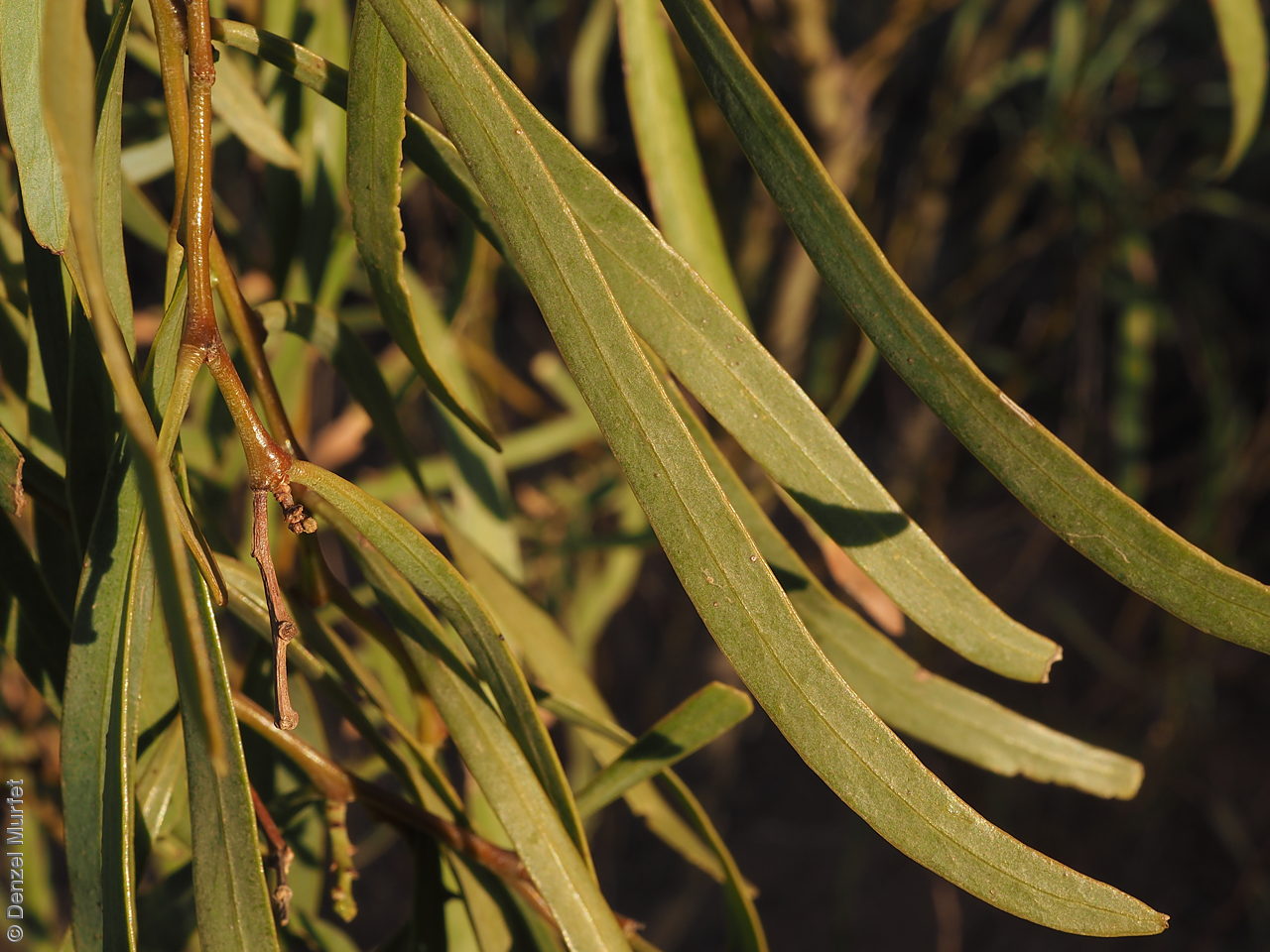
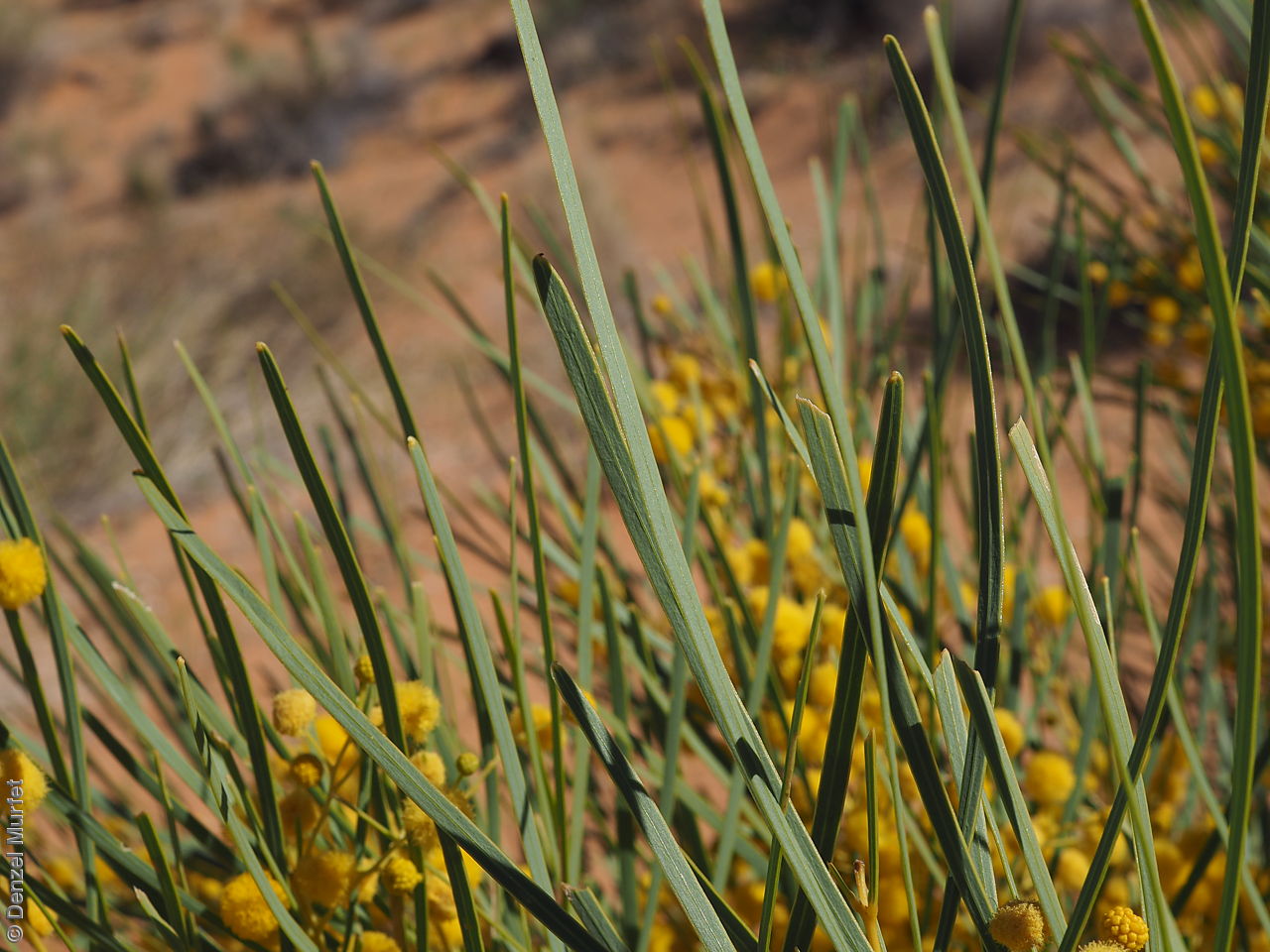
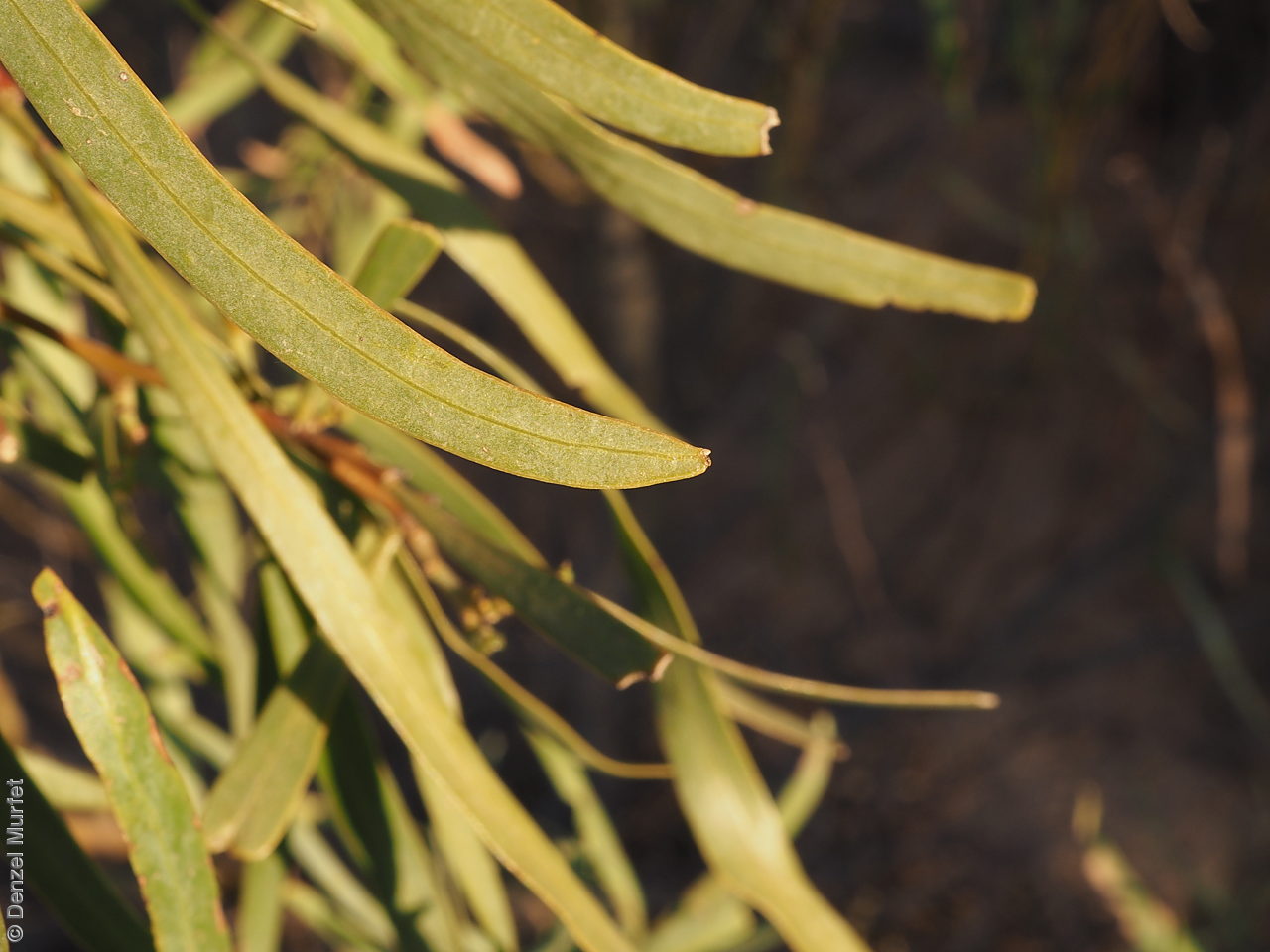
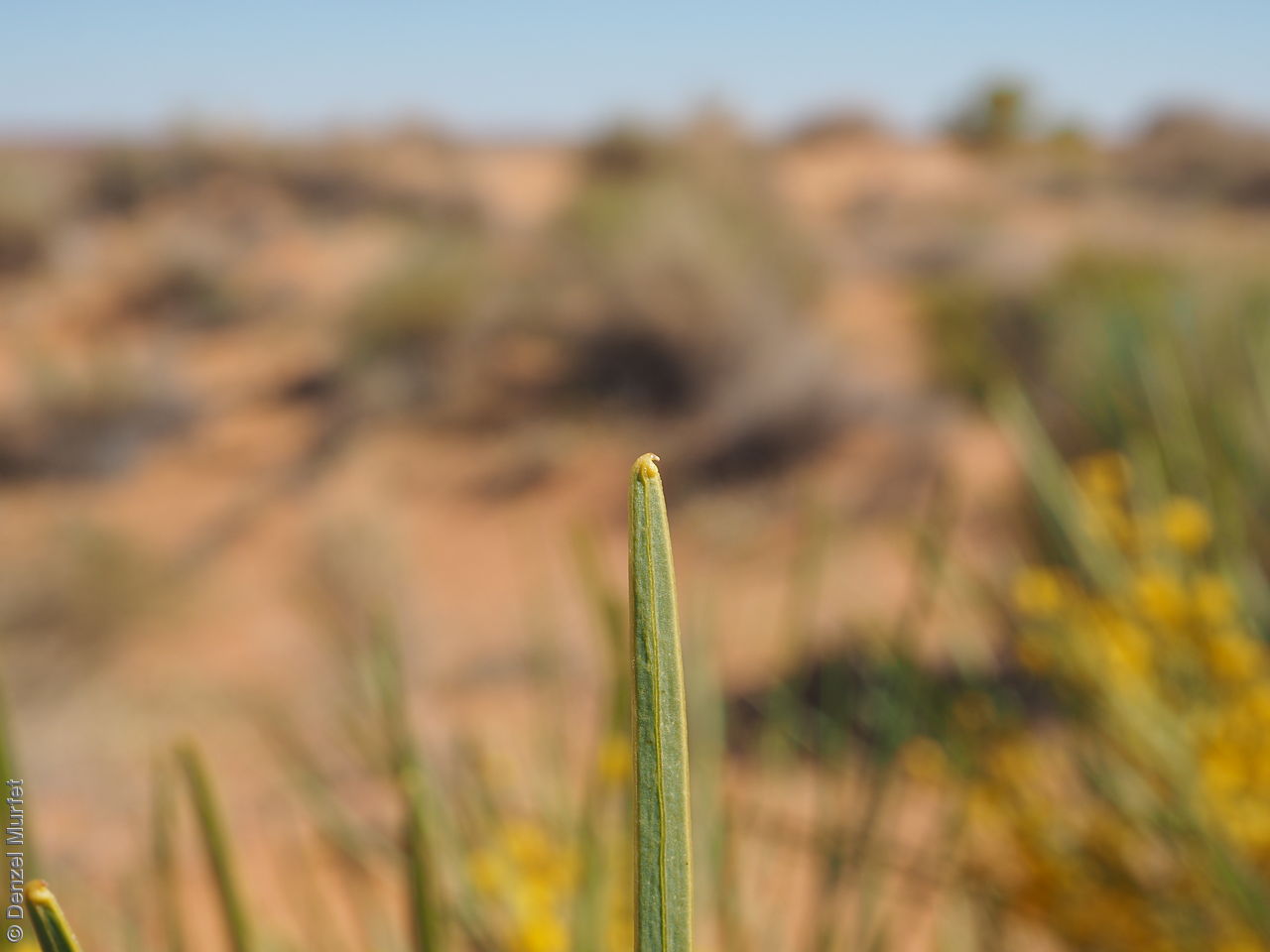
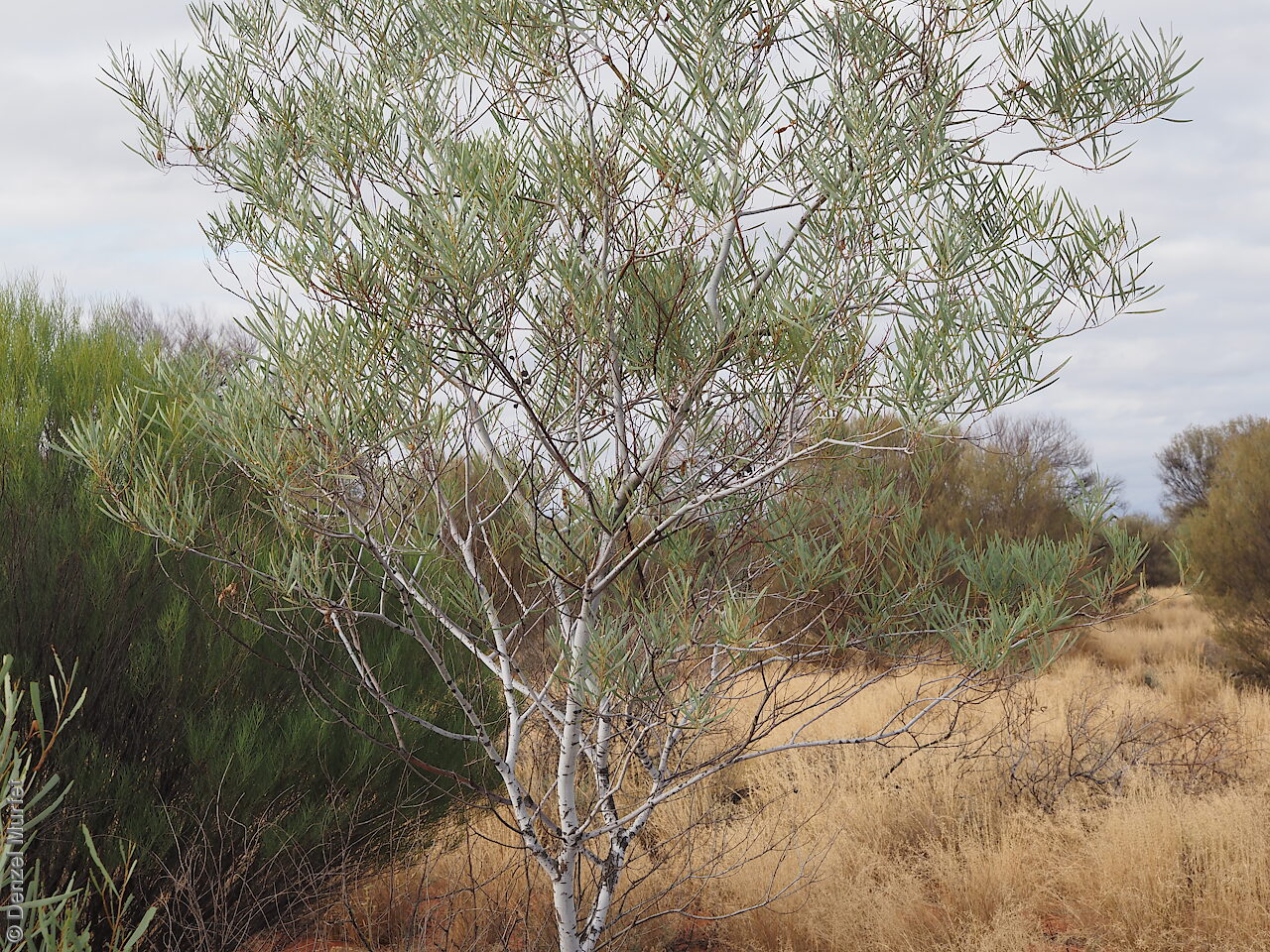
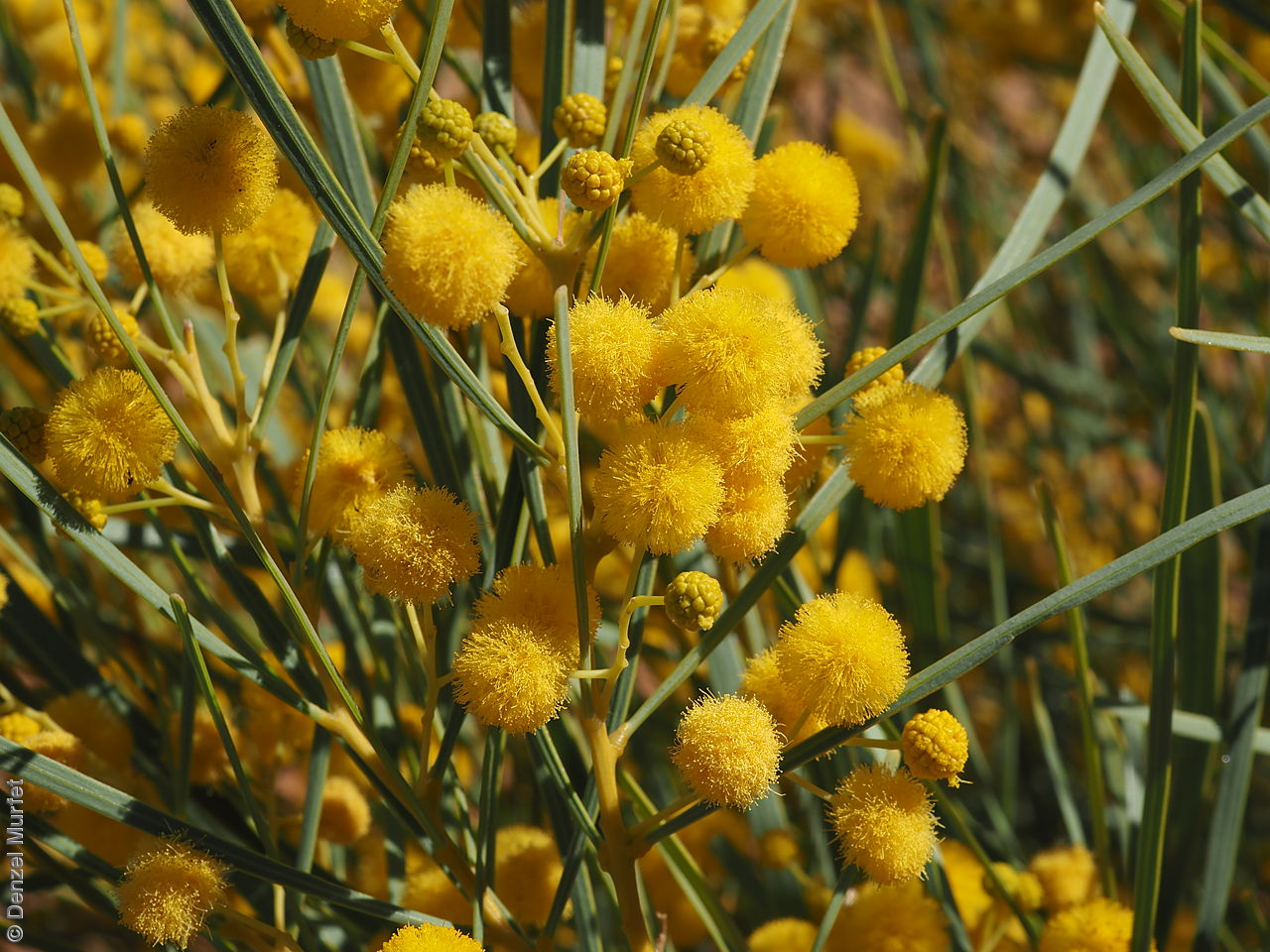
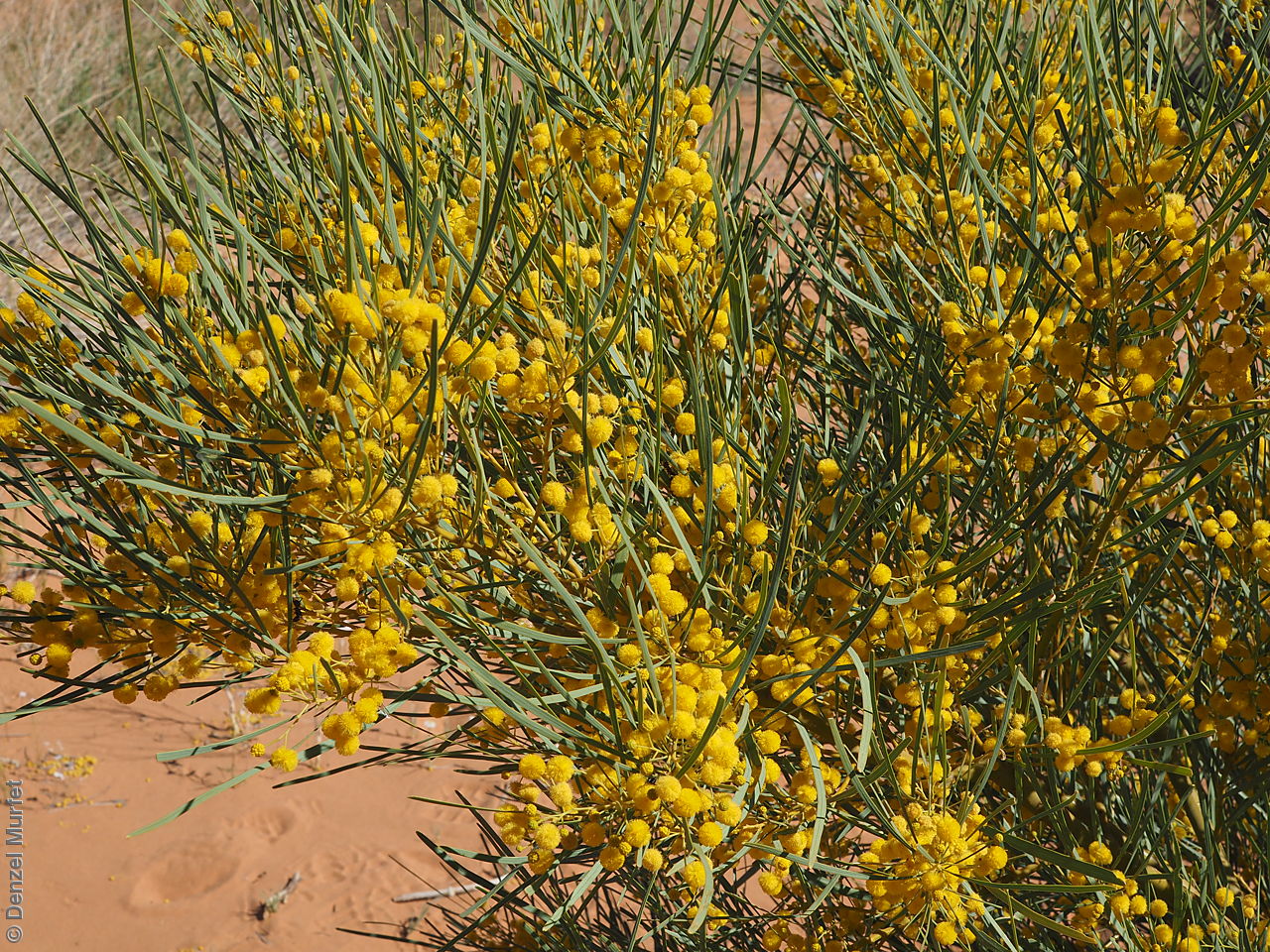
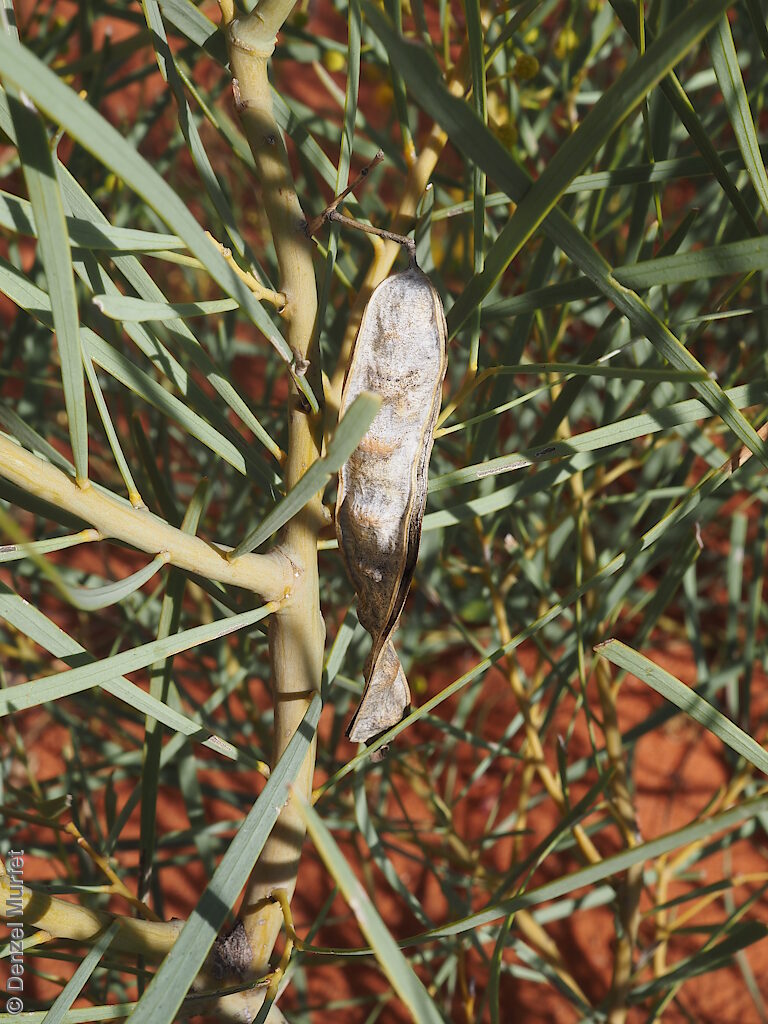
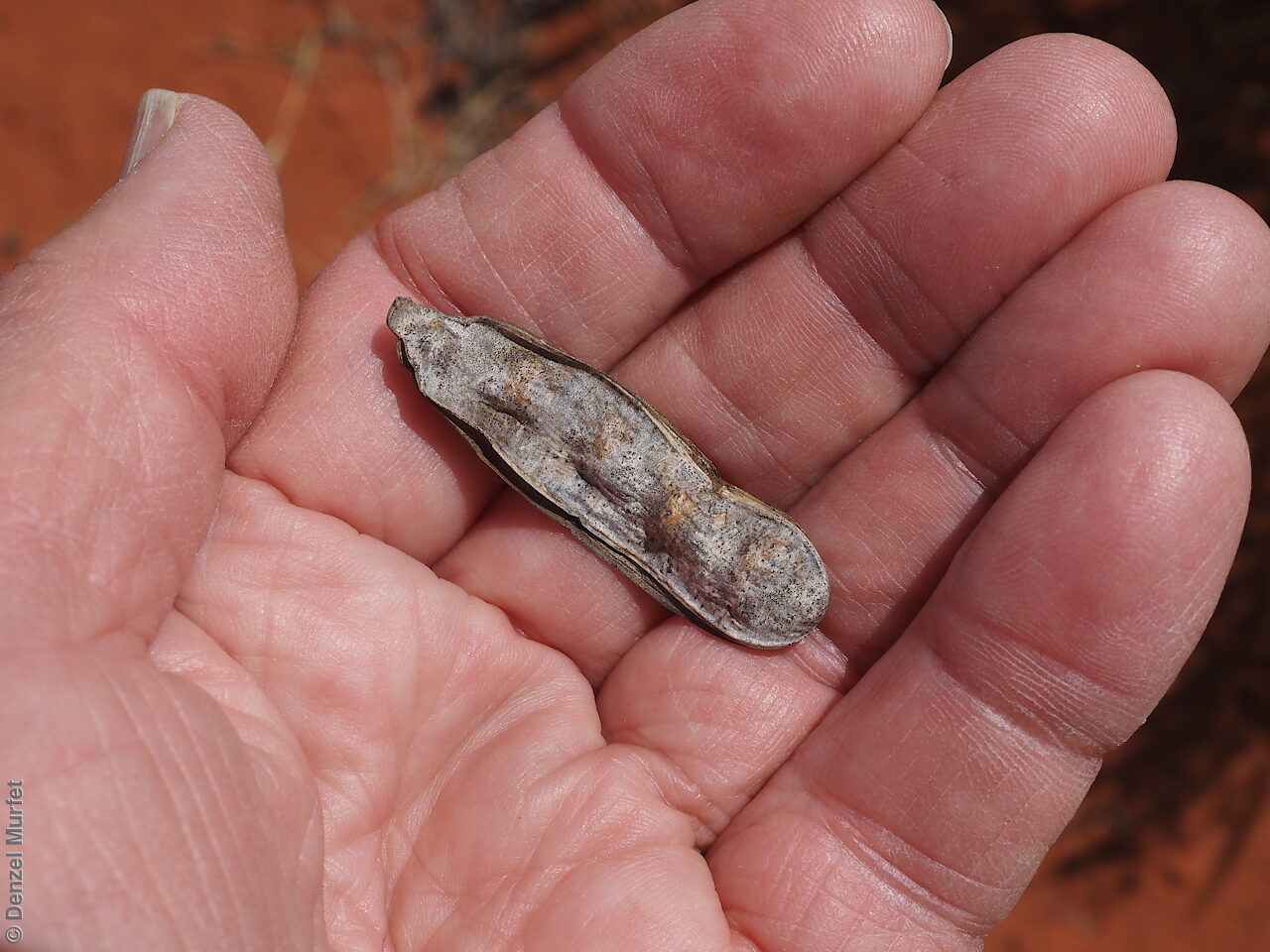
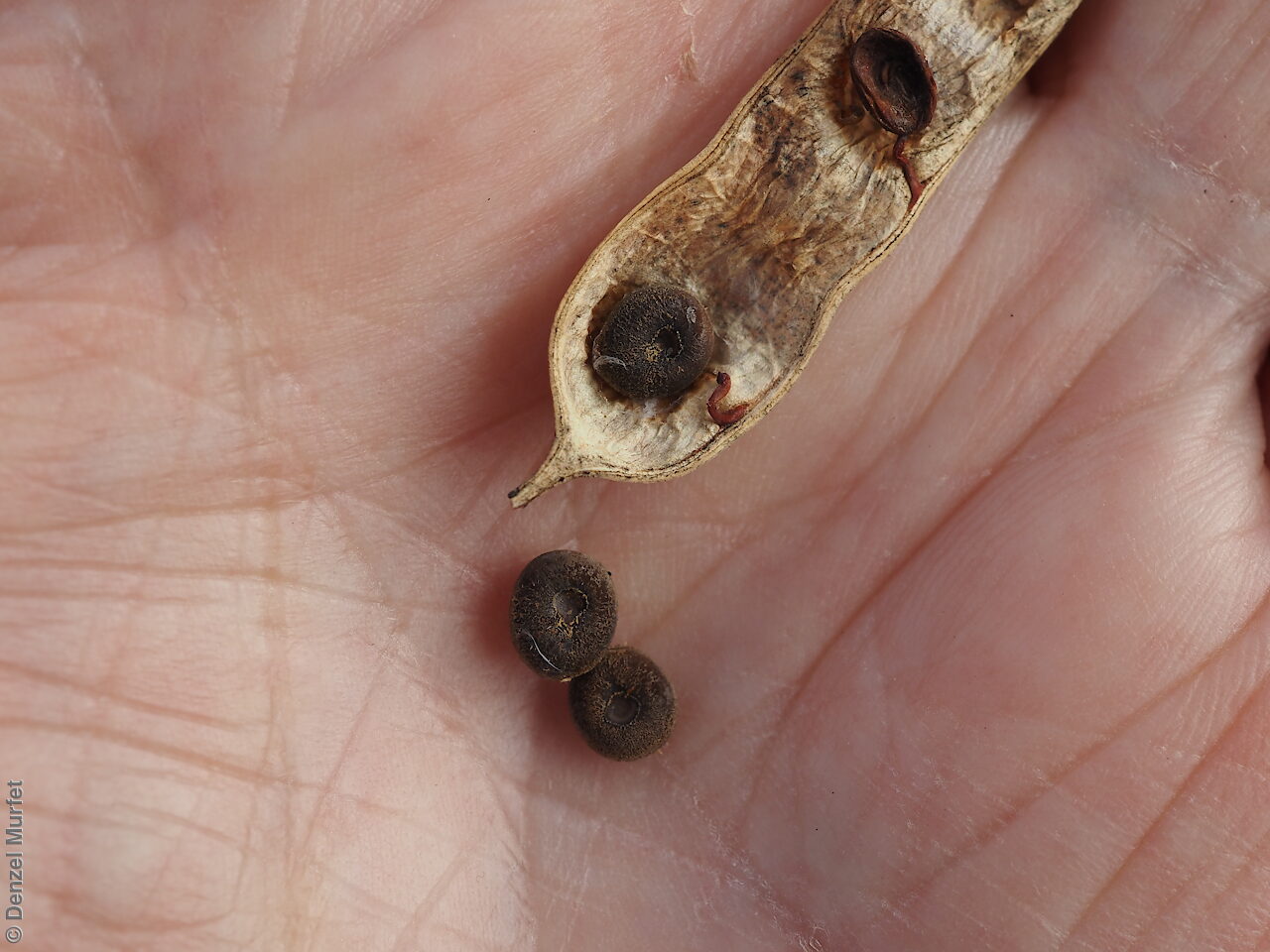
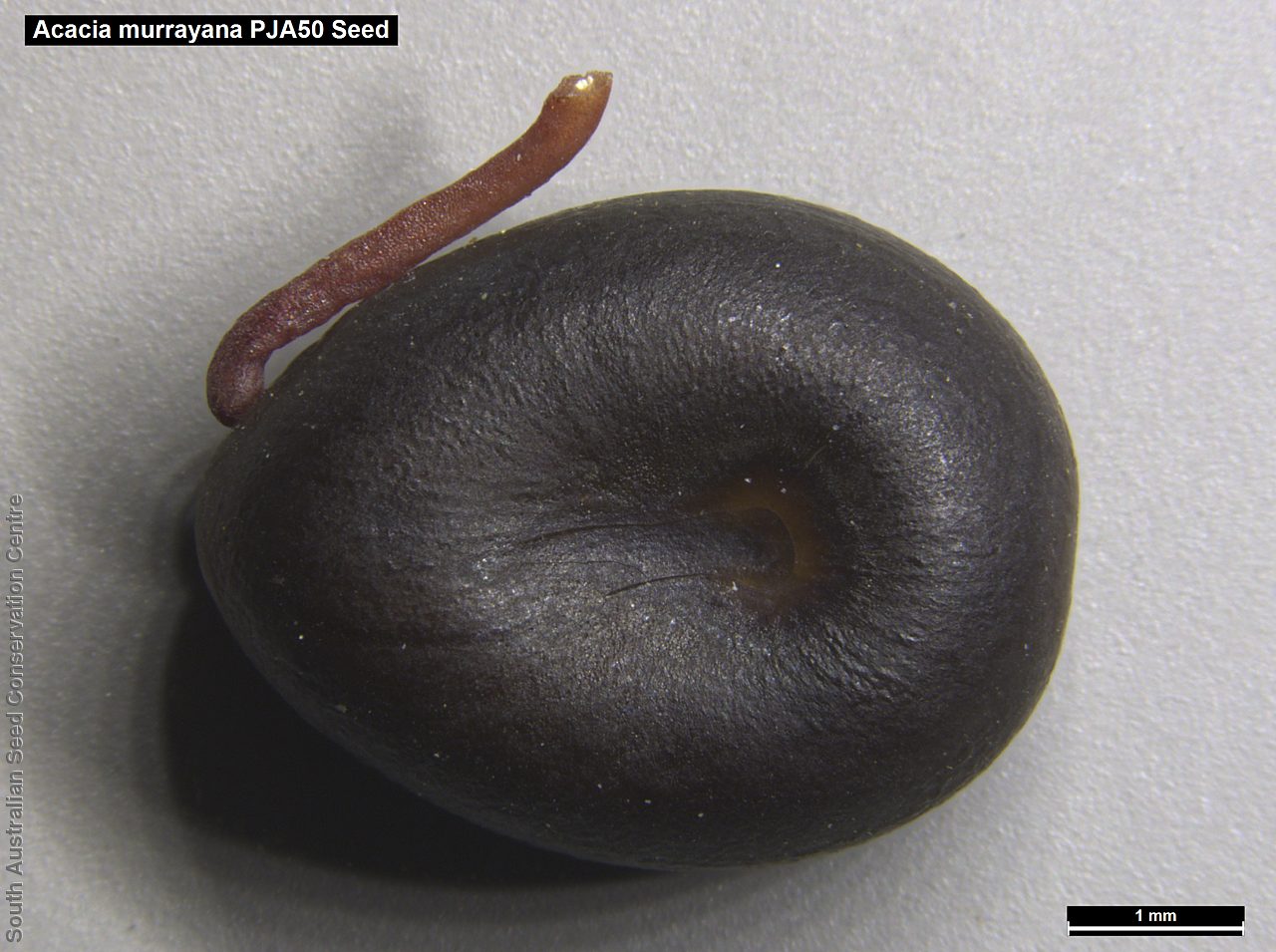
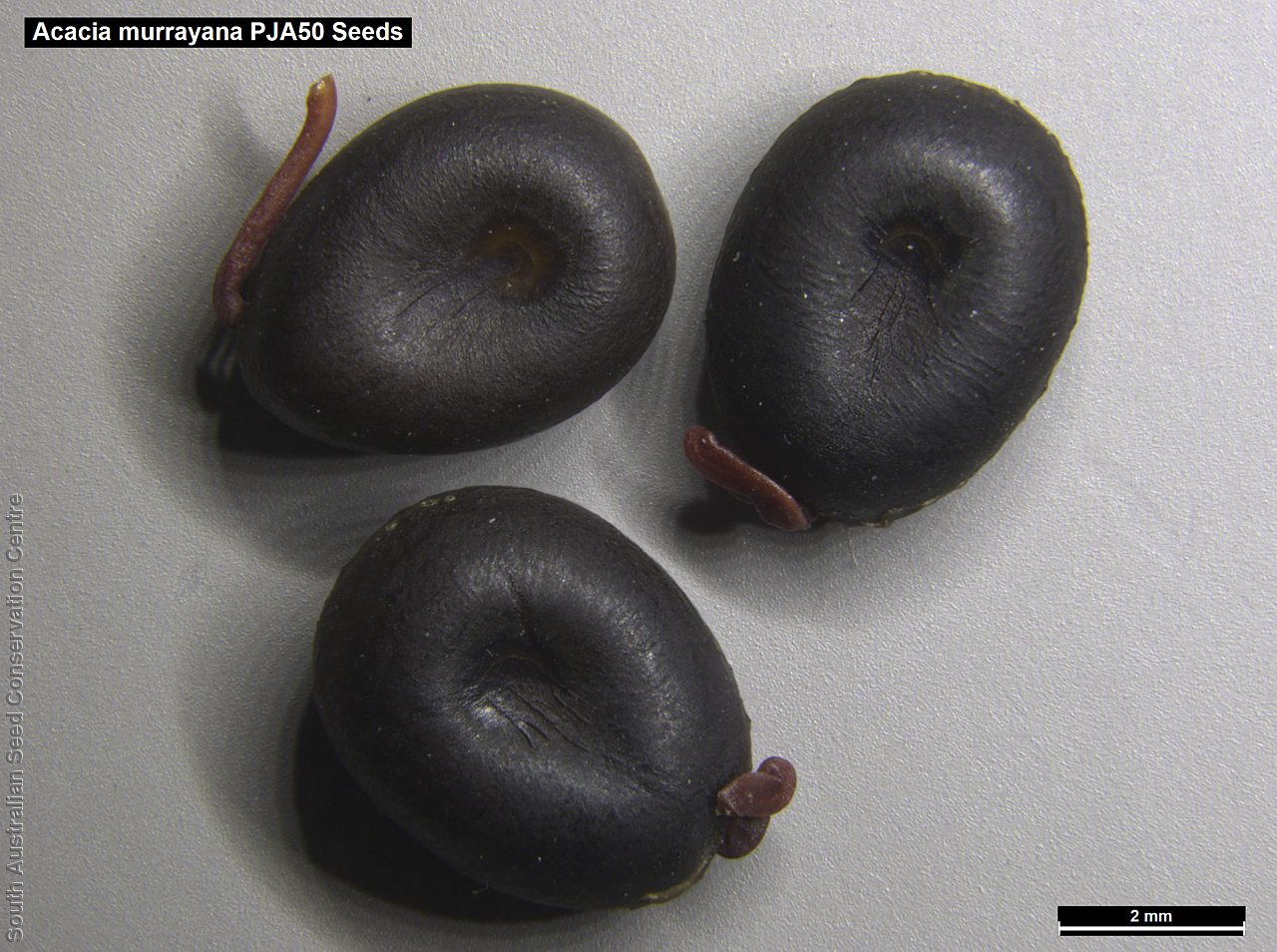

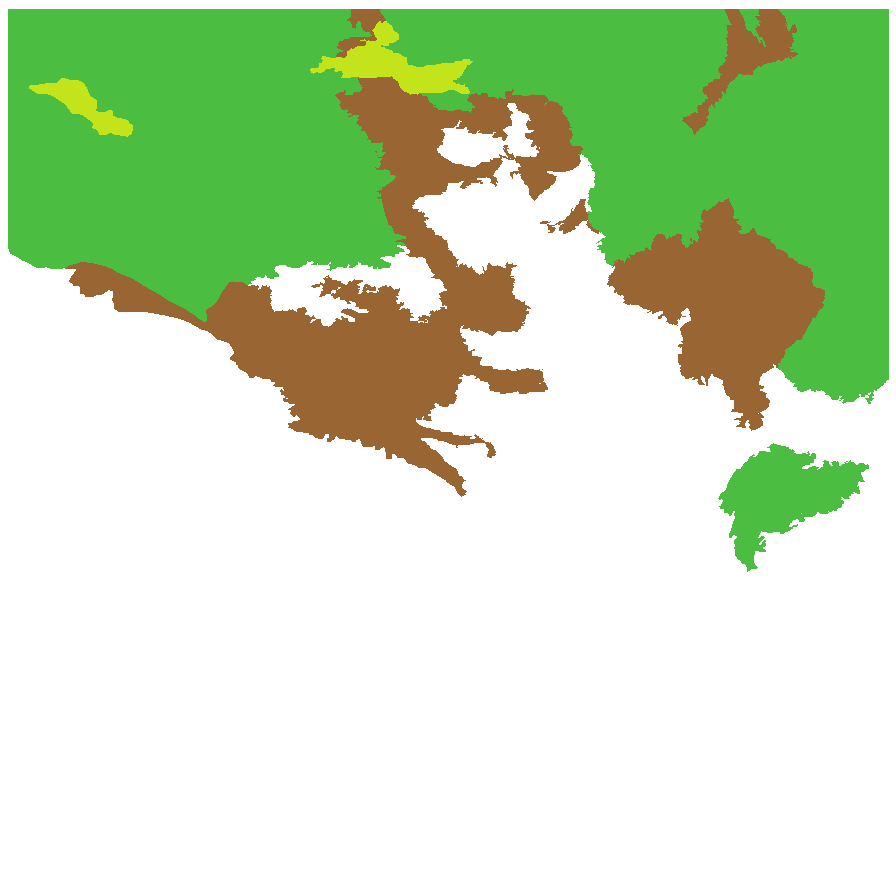
Botanical art
Prior names
Racosperma murrayanum
Acacia leptopetala
Acacia frumentacea
Common names
Murray's Wattle
Colony Wattle
Etymology
Acacia from the Greek 'akakia' and derived from 'ake' or 'akis' meaning a sharp point or thorn and 'akazo' meaning to sharpen. Dioscorides, the Greek physician and botanist used the word in the 1st century AD for the Egyptian thorn tree, Acacia arabica. Murrayana named in honour of Dr. James Patrick Murray, a surgeon and plant collector to the Howitt's Expedition in search of Burke and Wills.
Distribution and status
Found scattered throughout the northern part of South Australia, with one disjunct population near Yunta. Grows in hummock grassland to low woodland and tall shrubland, usually in red or yellow deep sands, on or between sand ridges or along sandy creek banks and floodout areas. Also found in Western Australia, Northern territory, Queensland and New South Wales. Native. Common in South Australia. Common in the other States.
Herbarium regions: North Western, Lake Eyre, Gairdner-Torrens, Eastern
AVH map: SA distribution map (external link)
Plant description
Erect, bushy shrubs or small trees to 5 m high, crown spreading, usually dividing into a few main stems near ground level, with branchlets slightly angular becoming terete; greenish-yellow to reddish-brown, often pruinose. Leaves variable, linear-oblong to linear-lanceolate, to 18 cm long and 7 mm wide; straight, curved or falcate, flat, pale-green to glaucous with mid-vein prominent; margins yellowish vein-like, lateral veins rather obscure; apex obtuse but with a small recurved point; a small gland below the point, a second rather obscure gland at the base of phyllode just above the short wrinkled pulvinus. Flower-spike in axillary glabrous racemes shorter than phyllodes usually consisting of 3-7 globular, bright yellow flower-heads. Flowering between August and October. Fruits are brown, narrowly oblong pod to 7 cm long and 10 mm wide, flat but raised over the seeds showing their outline; margins straight or slightly constricted. Seeds are hard black ovoid seed to 5 mm along and 4 mm wide with a short rounded red aril. Seed embryo type is investing.
Seed collection and propagation
Collect seeds between December and February. Collect mature pods that are turning brown, with hard, dark seeds inside. Place the pods in a tray and leave to dry for 1-2 weeks or until the pods begin to split. Then rub the dried pods to dislodge the seeds. Use a sieve to separate any unwanted material. Store the seeds with a desiccant such as dried silica beads or dry rice, in an air tight container in a cool and dry place. This species has physical dormancy that needs to be overcome for the seed to germinate (e.g. nicking or softening the seed coat).
| Location | No. of seeds (weight grams) | Number of plants | Date collected | Collection number Collection location | Date stored | % Viability | Storage temperature |
|---|---|---|---|---|---|---|---|
| BGA MSB | 8,173 (249.2 g) 8,173 (249.2 g) | 50 | 1-Dec-2003 | PJA50 North Western | 1-Sep-2004 | +5°C, -18°C |
Number of plants: This is the number of plants from which the seeds were collected.
Collection location: The Herbarium of South Australia's region name.
% Viability: Percentage of filled healthy seeds determined by a cut test or x-ray.